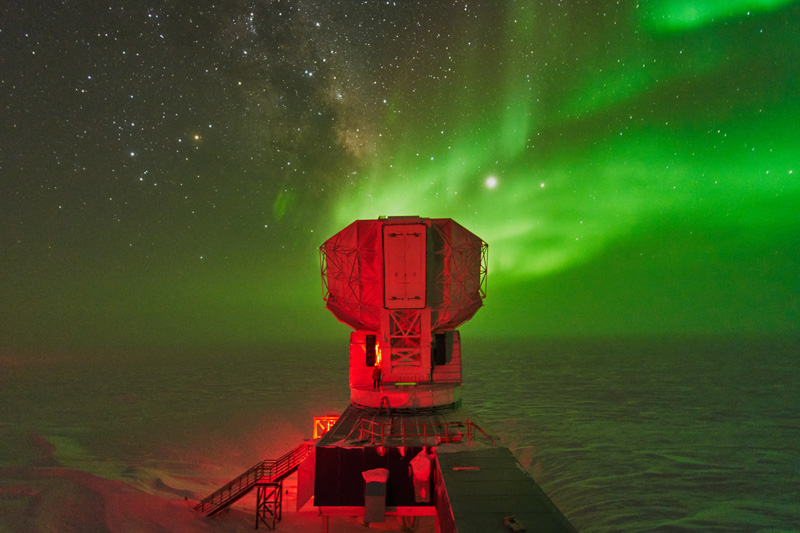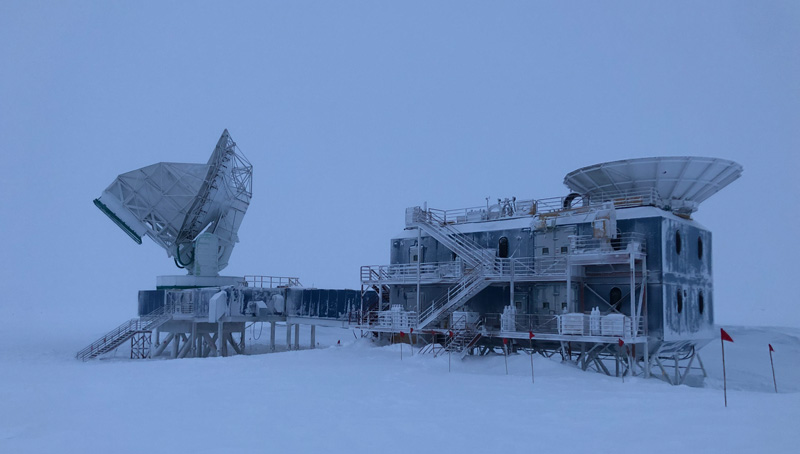While people were isolating in their homes at the start of the COVID-19 pandemic, Allen Foster was in the “only place on Earth that didn’t have COVID”: the Amundsen-Scott South Pole Station in Antarctica. He was there working on the South Pole Telescope (SPT). “It was kind of a surreal thing,” said Foster, a Ph.D. candidate at Case Western Reserve University in Cleveland.
During his 10-month South Pole assignment in 2019, Foster focused on determining how well the SPT could sort light from some of the most extreme phenomena in the universe: the cosmic microwave background and black holes.
Foster has the unique and rare experience of being one of only around a thousand people each year who overwinter in Antarctica. Not only do temperatures fall to nearly –80°C (–110°F), but also darkness covers the land throughout the entire 7-month season (February through August), making many scientists steer clear of such a tough work environment.
I love being in Antarctica [and seeing] all the dust splotches in the galaxy and the superbright, super colorful auroras.
Although some polar scientists can suffer from winter-over syndrome, “I love being in Antarctica,” said Foster. During the long, dark winter, he enjoys seeing “all the dust splotches in the galaxy and the superbright, super colorful auroras.” He has gotten used to the continent’s extreme temperatures and regularly records his thoughts and experiences in his blog.
In 2022, Foster found himself back at the South Pole as a telescope operator, about a year after his first stint at the station. He now is responsible for scheduling observations using the SPT as well as installing and maintaining the equipment, which includes “lots of greasing.” He also helps train new SPT crew.

The SPT keeps Foster busy. The telescope is part of the global Event Horizon Telescope array, which aims to image objects the size of a supermassive black hole’s event horizon. In March 2022, the Event Horizon Telescope’s 2-week observation window to search for black holes, galaxies, and quasars meant 16-hour workdays for Foster. These stretches weren’t actually work days, he said. “[They] happened to be overnight for us because we’re in a weird time zone.”

Foster is also working on his doctoral thesis using observations and data from the SPT to look for deep solar system objects like the possible Planet 9. If this planet exists, it would be so far from the Sun that it would be very difficult to observe through an optical telescope. But according to Foster, “it’s possible it has a reasonably strong thermal emission, which would be visible to the SPT-3G experiment” (the third survey receiver operating on the South Pole Telescope dedicated to high-resolution observations of the cosmic microwave background). He hopes his thesis will show the power and possibilities of the SPT for future observations of distant celestial objects at millimeter wavelengths.
This profile is part of a special series in our August 2022 issue on science careers.
—Santiago Flórez (@rflorezsantiago), Science Writer


